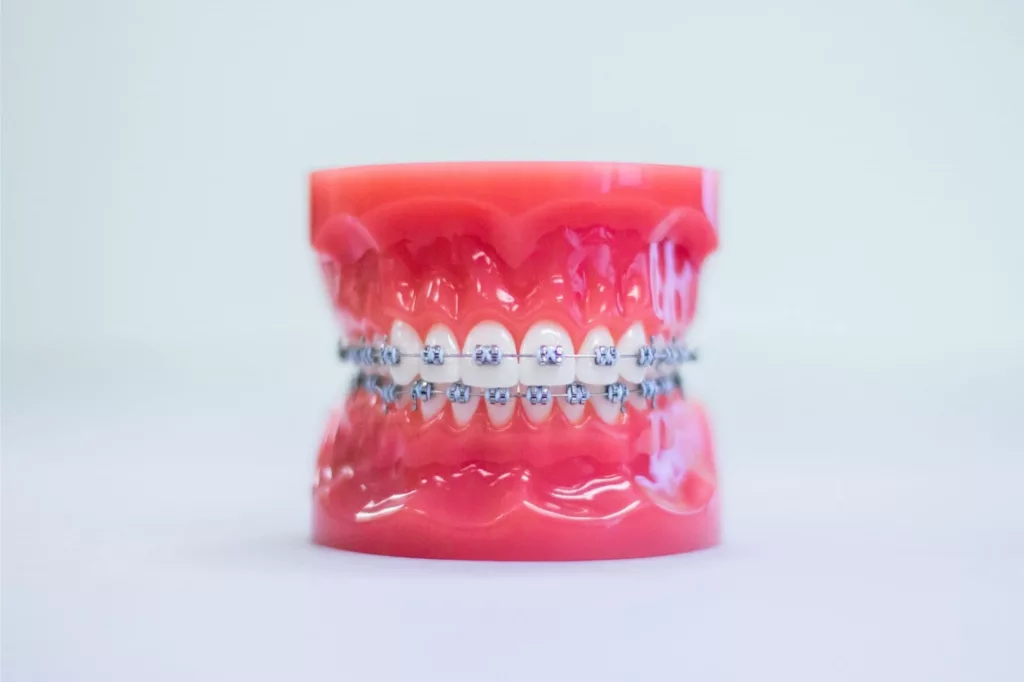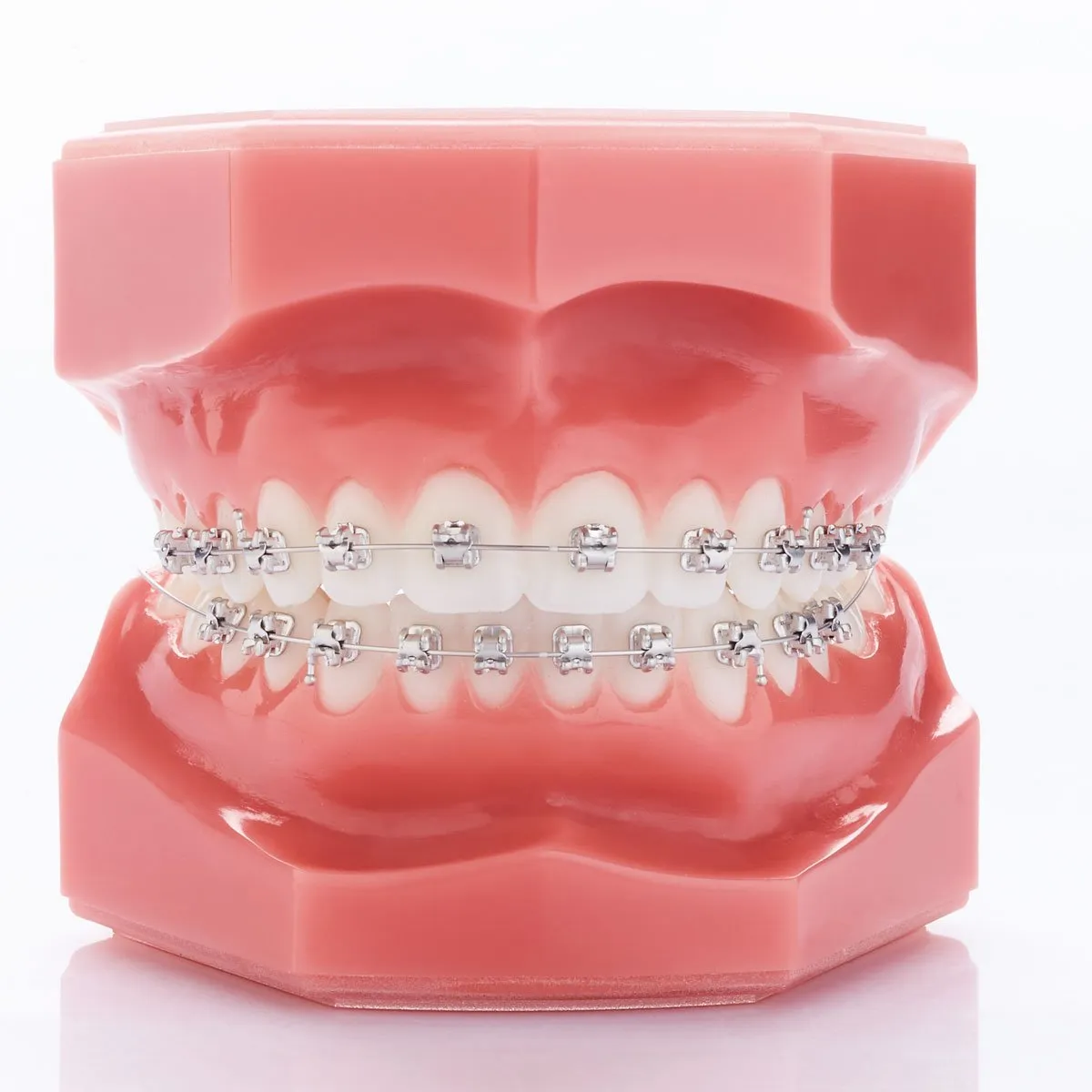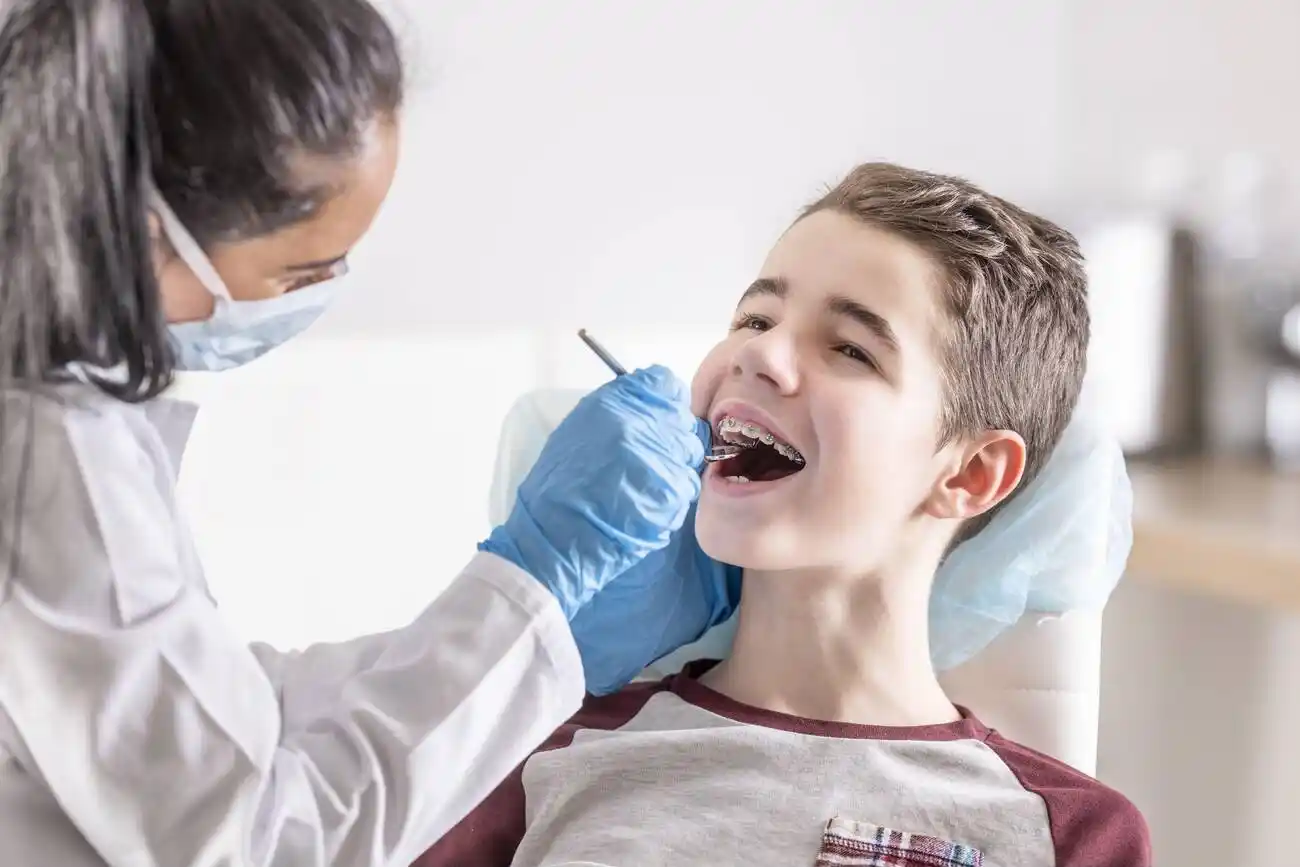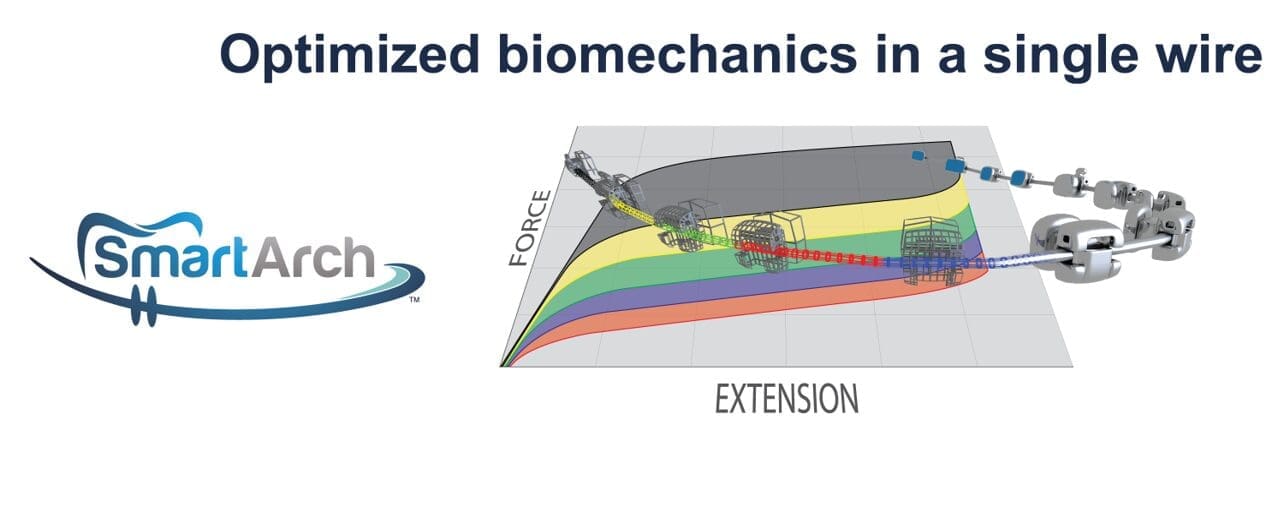Rodrigo F. Viecilli, DDS, PhD
Are metal braces (also called silver braces) the right choice for a straighter smile? In this comprehensive guide, you will uncover the benefits, costs, and care tips for metal braces. Metal braces Austin residents pursue are traditional in design, and are a time-tested solution for complex dental issues, offering durability and cost-effectiveness. Discover how traditional metal braces work, their composition, and why they might be the most suitable option for achieving your orthodontic goals.
Key Takeaways
-
Metal braces consist of stainless steel brackets, archwires, and elastic ties, which work together to apply controlled pressure for teeth realignment, with options like rhodium and self-ligating braces enhancing aesthetics and comfort.
-
The strength and durability of metal braces make them a cost-effective solution for correcting complex orthodontic issues, with average out-of-pocket costs at $3,407 with insurance, and options like FSAs, HSAs, and payment plans available.
-
Traditional braces require a commitment to oral hygiene and lifestyle adaptations, with regular brushing, a careful diet, and protection during sports, and advancements in technology offer potentially shorter treatment durations and greater comfort.
Understanding Metal Braces: Composition and Function

Metal dental braces, also known as traditional braces, are a popular orthodontic treatment designed to correct dental misalignment. They comprise of three main components:
-
Stainless steel brackets: These are cemented to the teeth, acting as a secure base.
-
Archwires: Connected to the brackets, these guide the movement of the teeth.
-
Elastic ties: These hold the archwire in place.
Together, these components work to gradually align misaligned teeth, correcting crooked teeth, and creating a straighter smile for your permanent teeth.
But how exactly does this system work? The secret lies in the controlled pressure applied by the braces. The constant pressure on the teeth forces them to move gradually into the desired position. Regular adjustments made by your orthodontist ensure this pressure is maintained, leading to successful realignment over time.
The Role of Stainless Steel Brackets
Stainless steel brackets are an essential part of metal braces. Their primary role? To keep teeth fit and anchor the archwire securely. This anchorage facilitates the application of corrective forces to the teeth through the archwire. The brackets have slots that allow the archwire to be threaded through, guiding the movement of the teeth.
While traditional stainless steel brackets and wires are effective, advancements in braces technology have introduced a new material that offers a “whiter” look. Rhodium brackets are now available as a substitute, offering a perfect blend of functionality and aesthetics.

Archwire Dynamics
The archwire in braces is a vital component, providing a path to guide teeth to their corrected positions during orthodontic treatment. Initially, round archwires, known for their flexibility, are used in the initial stages of orthodontic treatment. As the teeth begin to align, the round wires are replaced with rectangular archwires for enhanced control.
The materials used in the archwire also undergo a transition. Initially, nickel-titanium wires, which can return to their original shape, are employed to apply gentle yet consistent forces on the teeth. As the treatment progresses, stainless steel archwires, which are significantly harder, are used. Their superior strength is beneficial in the latter stages of treatment.
The Colorful World of Elastic Ties
Orthodontic ligatures, also known as elastic ties or o-rings, are essential for securing the archwire to the brackets and play a crucial role in evenly distributing the forces necessary to straighten teeth and adjust tooth alignment. But that’s not all these elastic ties do. They also bring a dash of vibrancy to the otherwise metallic world of braces!
Available in a multitude of colors, elastic ties offer patients a chance to personalize the appearance of their stainless steel braces during treatment. From vibrant hues to transparent options, these various elastic bands and ties offer both a functional component and an opportunity for aesthetic expression. Plus, they’re made from either latex or synthetic materials to accommodate patients’ different needs, including those with latex allergies.

The Superior Strength of Metal Braces
One of the key advantages of stainless steel braces is their superior strength. Thanks to materials like stainless steel with a high Vickers hardness value, these braces are stronger and more durable than other types of braces. The manufacturing methods, such as Metal Injection Molding used for Dentaurum Discovery Smart brackets, enhance these mechanical properties and contribute to the strength and hardness of the metal braces.
These robust braces, including metal and ceramic braces, are exceptionally effective in correcting a wide array of orthodontic issues, even those that are particularly complex. Furthermore, their durability makes these braces a more cost-effective choice for patients with challenging dental alignments than ceramic braces.
The Orthodontic Journey with Metal Braces
Embarking on the orthodontic journey with metal braces is a commitment. Treatment typically lasts 1 to 3 years, depending on the complexity of the individual’s orthodontic needs. This journey is comprised of several stages, including an initial consultation, regular adjustments, and potentially the use of elastics for bite correction.
Initial Consultation and Planning
The first step in your orthodontic journey is the initial consultation. The orthodontist needs to have a comprehensive understanding of your dental health before they can plan the dental treatment. This is achieved by:
-
Reviewing your medical and dental history
-
Completing insurance documentation
-
Taking digital X-rays and possibly 3D images using CBCT technology to obtain detailed images of the teeth and jaw for an accurate diagnosis.
After an extensive examination, the orthodontist creates a customized treatment plan, specifying the estimated length of treatment. You then discuss different types of braces, treatment plans, payment options, and go over the financial contract and treatment consent forms with the treatment coordinator.
The Adjustment Phase

Once all the teeth braces are fitted, the adjustment phase begins. Regular adjustments to metal braces are vital for the orthodontic treatment to be effective, as they ensure that the braces are working correctly to align the teeth. During adjustment appointments, the orthodontist tightens the braces and may replace the archwire, which is key to applying the continuous pressure required to guide teeth into their desired positions.
The frequency of adjustments typically ranges from every 4 to 8 weeks, varying based on the specifics of the patient’s case and the type of braces used. Missing or delaying adjustments can lead to a longer treatment duration and potentially unsatisfactory results, which emphasizes the importance of adhering to scheduled appointments.
Bite Correction with Elastics
Elastics (rubber bands) connecting upper and lower teeth are a crucial component in correcting specific bite issues such as:
-
Overbite
-
Underbite
-
Open bite
-
Crossbite
These elastics come in different forces and sizes to match the specific requirements of the bite correction needed. They might be applied at different stages of the treatment process, with some patients requiring them soon after the braces are fitted while others may need them later in the treatment.
The responsibility of replacing these elastics regularly due to loss of elasticity lies with the patients. They are advised to follow their orthodontist’s detailed instructions regarding the proper times to remove and replace them, particularly for activities like eating and oral hygiene.
Metal Braces Cost Analysis
While the prospect of getting braces might be exciting, it’s also important to consider the costs involved. Here are some key points to keep in mind:
-
Metal braces typically cost between $1,700 and $6,000, with ceramic braces being in the higher range.
-
Insurance often covers a portion of the down payment for braces and distributes the benefit over the treatment’s duration up to a maximum limit.
-
Patients with insurance typically pay an average of $3,407 out-of-pocket for traditional metal braces.
However, you don’t have to worry if you don’t have insurance. Patients can utilize Flexible Savings Accounts (FSAs) and Health Savings Accounts (HSAs) with pre-tax dollars. Moreover, many orthodontists offer flexible, interest-free payment plans.
Despite being less aesthetically pleasing compared to alternatives, the lower cost and potentially shorter treatment period make metal braces a cost-effective option.
Lifestyle Considerations While Wearing Braces

Wearing braces does come with certain lifestyle considerations. From adhering to dietary restrictions to taking precautions during sports and other activities, the patient’s lifestyle plays a crucial role in the success of the treatment. However, with the right guidance and commitment, these changes are more than manageable.
Diet and Oral Hygiene
Maintenance of a healthy diet and proper oral hygiene is paramount when you’re wearing braces. Given the numerous crevices where food particles and plaque can accumulate, you need to:
-
Brush your teeth after every meal or at least three times a day.
-
Use an interdental brush to clean around wires and brackets.
-
Floss at least once a day with an orthodontic flosser or floss threader.
-
Rinse with water before brushing.
-
Use antiseptic mouthwash after brushing to ensure maximum cleanliness.
As for your diet, here are some tips to follow while wearing braces:
-
Avoid hard, sticky, and chewy foods to prevent damaging your braces.
-
Cut hard foods into smaller pieces before eating.
-
Brace-friendly foods like yogurt, bananas, cheese, and noodle dishes are encouraged.
-
Maintain a nutritious diet to provide essential nutrients to bones and tissues undergoing change.
-
Avoid high sugar and starch foods to prevent plaque buildup around metal brackets.
-
Limit high-acid foods to protect tooth enamel.
Following these dental care guidelines will help you take care of your braces while you wear braces and maintain good oral health.
Sports and Activities
For those who are athletically inclined, wearing braces need not hamper your sporting activities. However, wearing a mouth guard during sports is crucial to protect braces and teeth from damage due to impacts. Orthodontic mouthguards, specifically designed to accommodate metal braces, are recommended over regular ones.
Custom-fit options such as SISU and Shock Doctor mouthguards provide a superior fit for those with braces, making them a comfortable and effective choice. These mouthguards are made of high-grade materials like silicone and can be remolded to fit the teeth as they move during treatment.
Other options include Vettex mouthguards, offering lip guards to prevent biting injuries, and Tapout mouthguards, promoting airflow and can be remolded for athletes with and without braces.
Aesthetic and Social Implications of Metal Braces

It’s no secret that wearing metal braces can impact self-confidence and social interactions. The prominent appearance of metal on the teeth may be perceived as less desirable than less noticeable options such as ceramic braces or clear aligners like Invisalign. This might lead older teens, adults, and working professionals to opt out noticeable braces for the subtlety of ceramic braces, despite the need for careful maintenance to avoid staining.
However, it’s important to remember that orthodontic treatment with metal braces is temporary, while the benefits of a straighter, healthier smile last a lifetime. Moreover, the aesthetic concerns may be outweighed by the effectiveness and cost benefits of metal braces, especially for those with complex orthodontic issues.
Personalizing Your Braces Experience
Orthodontic treatment doesn’t have to be a mundane experience. In fact, it can be quite fun! For instance, teenage patients often choose metal brackets so they can customize their braces with different colors, treating them as a fashion accessory. The option to select the color of your braces allows you to express your style and preferences.
Moreover, advancements like Discovery Smart brackets offer a combination of a small, modern design and low profile, providing comfort with effective control of tooth movement. In addition to colorful customization, surgical steel power chains may be used to achieve complex tooth movements that elastics alone cannot.
Advancements in Braces Technology
Orthodontics has come a long way, with significant advancements in metal braces technology, including lingual braces and self-ligating braces. One such advancement is the introduction of self-ligating braces. These braces offer several benefits:
-
They use a slide mechanism instead of elastics to hold wires, reducing friction and the need for frequent adjustments.
-
Patients typically find self-ligating braces more comfortable and experience less discomfort during adjustments.
-
At Limestone Hills Orthodontics, we use self-ligating technology for our ceramic braces because transparent elastic ties tend to stain, and of course self-ligation eliminates them. We use regular stainless steel braces without self-ligation because most young patients like to have fun changing the color of their elastic ties, making self-ligation pointless.
-
The design of these braces also aids in better oral hygiene by minimizing areas where food can get trapped.
Another exciting advancement in orthodontics is the SmartArchTM wire technology- the archwire invented by our orthodontist Dr. Viecilli. This technology offers several benefits, including:
-
Potentially cutting treatment duration by up to 50%, moving into a finishing wire after only two archwires
-
Improved customized orthodontic care through digital software platforms
-
Robotic wire-bending for greater precision in treatment
-
Indirect bonding techniques for improved accuracy
These advancements in technology are revolutionizing the field of orthodontics, providing patients with more efficient and precise orthodontic services and treatment options.

Emerging approaches in accelerated orthodontics, such as micro-osteoperforations and high-frequency vibration, are being explored to expedite the tooth movement process. These advancements not only improve treatment effectiveness and the efficiency of orthodontic treatment but also enhance the overall patient experience.
Choosing the Right Orthodontic Treatment
Choosing the right orthodontic treatment is a decision that requires careful consideration. During the initial consultation, the treatment coordinator outlines potential orthodontic treatments, treatment plans, financing options, and the different types of braces available to the patient. Customization options for metal braces, such as brackets in various colors, allow for a personalized orthodontic experience, similar to the customization options offered by other brace types.
It’s important to remember that regardless of the type of braces you choose, retainers are typically required after the active phase of treatment to maintain the newly aligned position of your teeth. Therefore, it’s essential to consider all factors when choosing the right orthodontic treatment, including:
-
Cost
-
Aesthetics
-
Treatment duration
-
Post-treatment maintenance
Summary
Navigating the world of orthodontics may seem daunting at first, but with the right knowledge and guidance, it becomes less intimidating. This comprehensive guide has provided you with insights into the composition, function, and cost implications of metal braces. It has highlighted the lifestyle adjustments necessary during treatment and discussed the aesthetic and social implications of wearing braces. With advancements in technology, the journey to a straighter smile is now more comfortable and efficient than ever. Remember, the path to a beautiful smile might have a few twists and turns, but the end result is always worth the journey.
Frequently Asked Questions
Are metal braces better?
Metal braces are better than clear braces because they are made from durable materials, reducing the risk of repair costs, and they are less likely to show stains from pigmented foods if oral hygiene is not maintained.
How long do you wear metal braces for?
Most people wear metal braces for an average of 12-24 months, with the exact duration depending on the severity of the dental issues.
What are the disadvantages of metal braces?
Metal braces can be uncomfortable and visible, which can be considered a disadvantage. However, their durability and affordability are advantageous. It’s best to consult with your orthodontist to make an informed decision.
How painful are metal braces?
Metal braces can cause minor discomfort as the mouth adjusts to them, leading to soreness or an achy upper and lower jaw, for some patients. Over-the-counter pain relievers and saltwater rinses can help to alleviate the pain.
How much are the braces?
Braces generally cost between $3,500 and $8,000, and there are payment options and financing available to help with the cost.